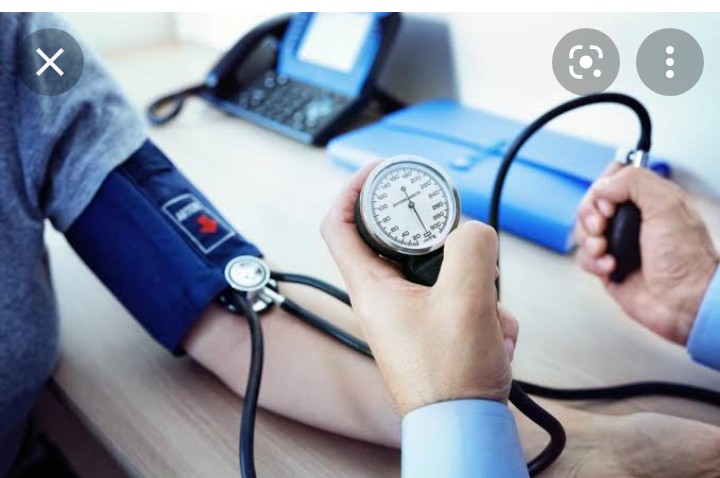
Using the sphygmomanometer
By Christine Richardson
What is blood pressure?
Alcohol and blood pressure
Standard drink definition
Types of drinking
Other risks of alcohol
Benefits of avoiding alcohol
Summary
Alcoholic beverages are very popular. Light-to-moderate alcohol consumption is typically safe, but excessive alcohol consumption can increase the risk of several metabolic conditions, including high blood pressure.
Hypertension, or high blood pressure, is a very common condition worldwide. It is also one of the leading causes of cardiovascular disease.
What is blood pressure?
Blood pressure is the amount of pressure in the blood vessels. This measurement takes into account the systolic blood pressure and the diastolic blood pressure.
Systolic pressure is the pressure within the arteries of the heart when the heart contracts, and diastolic pressure refers to the lowest pressure in the arteries when the heart is relaxing between contractions.
The unit of measurement for blood pressure is millimeters of mercury (mm Hg). It is expressed as systolic pressure over diastolic pressure.
A normal blood pressure is less than or equal to 120/80 mm Hg and anything greater than or equal to 130/80 mm Hg is considered high.
How alcohol affects blood pressure
Drinking alcohol affects blood pressure in more than one way. The following sections will look at some of these ways in more detail.
The renin-angiotensin-aldosterone system
Consuming alcohol affects the renin-angiotensin-aldosterone system (RAAS). The RAAS is controlled by the kidneys, and its function is to regulate blood pressure through three hormones: renin, angiotensin, and aldosterone.
Alcohol increases blood levels of the hormone renin, which causes the blood vessels to constrict. This means that they get smaller in diameter. Renin also decreases how much fluid the body eliminates as urine.
This combination of higher fluid levels in the body and smaller blood vessels increases blood pressure.
Vasopressin levels
Alcohol also reduces how much vasopressin the body makes.
Vasopressin is an antidiuretic hormone. It causes the body to hold onto water, which typically limits how much urine the kidneys make. The action of suppressing this hormone exacerbates the diuretic effect and leads to dehydration.
Cortisol levels
Another potential mechanism is the increase in cortisol levels. Cortisol is a hormone that regulates the body’s response to stress. It also regulates metabolism, immune function, and inflammatory pathways.
Cortisol increases the release of catecholamines, which are chemicals in the body that help regulate many processes and help keep the body functioning as it should.
Having higher levels of catecholamines causes the body to excrete less fluid through urine. Having more fluids in the body directly increases blood pressure levels.
Baroreceptor sensitivity
Alcohol also decreases baroreceptor sensitivity. Baroreceptors are types of receptors present in the body that help regulate blood pressure.
There are two different types of baroreceptors: high pressure baroreceptors and low pressure receptors. Both of these activate when the blood vessels stretch.
When blood pressure decreases, these receptors help minimize how much the blood vessels stretch to increase blood pressure. Similarly, when blood pressure increases, these receptors increase the stretching of the blood vessel walls in order to decrease blood pressure.
Alcohol prevents the body’s baroreceptors from detecting a need to stretch the blood vessels and increase their diameter, causing an increase in blood pressure.
Blood calcium levels
Alcohol consumption increases the amount of calcium that binds to the blood vessels. This increases the sensitivity of the blood vessels to compounds that constrict them. Constricting the blood vessels increases blood pressure.
What is the definition of a standard drink?

The definition of a standard drink is a beverage containing 14 grams (0.6 fluid ounces [fl oz]) of pure alcohol. This amount is present in:
12 fl oz of regular beer containing 5% alcohol
5 fl oz of wine containing 12% alcohol
1.5 fl oz of distilled spirits containing 40% alcohol
Although these values can be helpful, there is some variation in alcohol content. For example, some beers — especially craft beers — can contain about twice as much alcohol as above.
Blood pressure and types of drinking
There are three main classifications of drinking. These are heavy drinking, moderate drinking, and binge drinking.
According to the National Institute on Alcohol Abuse and Alcoholism:
Heavy alcohol use means men consuming more than four drinks on any given day, or more than 14 drinks per week, and women consuming more than three drinks on any given day, or more than seven drinks per week.
Binge drinking means men consuming five or more drinks in about 2 hours and women consuming four or more drinks in about 2 hours.
Moderate drinking means men consuming two drinks or fewer per day and women consuming one drink or fewer per day.
Recent data suggest that moderate and heavy drinking contributes to high blood pressure in men and women.
One recent study in the Journal of the American College of Cardiology found that in 17,059 participants, those who drank moderately and those who drank heavily were both at significantly higher risk of high blood pressure than those who never drank.
Another study, this time in the Journal of the American Heart Association, indicates that binge drinking increases blood pressure levels in men but not women. Despite this finding, women should try not to engage in binge drinking.
Other risks of alcohol use
Alcohol increases the risk of several other short- and long-term health issues.
Some short-term risks include:
alcohol poisoning
engaging in risky sexual behaviors, such as having sex without using a condom
bodily injury
irregular breathing
hypothermia
blackouts
memory issues
slurred speech
Some long-term risks include:
liver disease and liver failure
mental health issues, such as depression or anxiety
alcohol addiction
a weakened immune system
cardiovascular diseases, such as stroke or an irregular heartbeat
cancer
infertility
malnutrition
weight gain
decreased bone density
higher blood sugar levels
Health benefits of avoiding alcohol
Completely refraining from consuming alcohol lowers the risk of some of the health risks listed above. Although some of those effects can occur without alcohol consumption, avoiding alcohol helps decrease the risks.
Individuals who drink alcohol in excess can help improve their overall health by stopping drinking. For some people, this can be an easy process.
However, people who are dependent on alcohol or have been misusing alcohol for a long period of time may have difficulty quitting.
Some of the symptoms associated with alcohol withdrawal include:
shakiness
anxiety
headaches
irritability
depression
tremors
a fast heart rate
sweating
Individuals who do not experience withdrawal symptoms will likely see the positive effects of giving up alcohol shortly after doing so.
Some of the beneficial effects of avoiding alcohol include:
weight loss
more energy
better sleep
a lower risk of various conditions
If a person thinks that they might be consuming alcohol at a rate that would classify as moderate drinking, heavy drinking, or binge drinking, they should consider cutting back to improve their overall health and well-being.
Summary
Consuming alcohol can increase the risk of high blood pressure and other metabolic conditions in several ways. For example, alcohol can affect calcium levels, cortisol levels, and baroreceptor sensitivity, all of which can lead to increases in blood pressure.
To prevent various health complications, including high blood pressure, people should try to limit their alcohol consumption to one or two glasses infrequently.
If a person has concerns that they or someone they know might have a dependency on alcohol, they should seek professional advice and support as soon as they can.
Seeking help for addiction may seem daunting or even scary, but several organizations can provide support.






